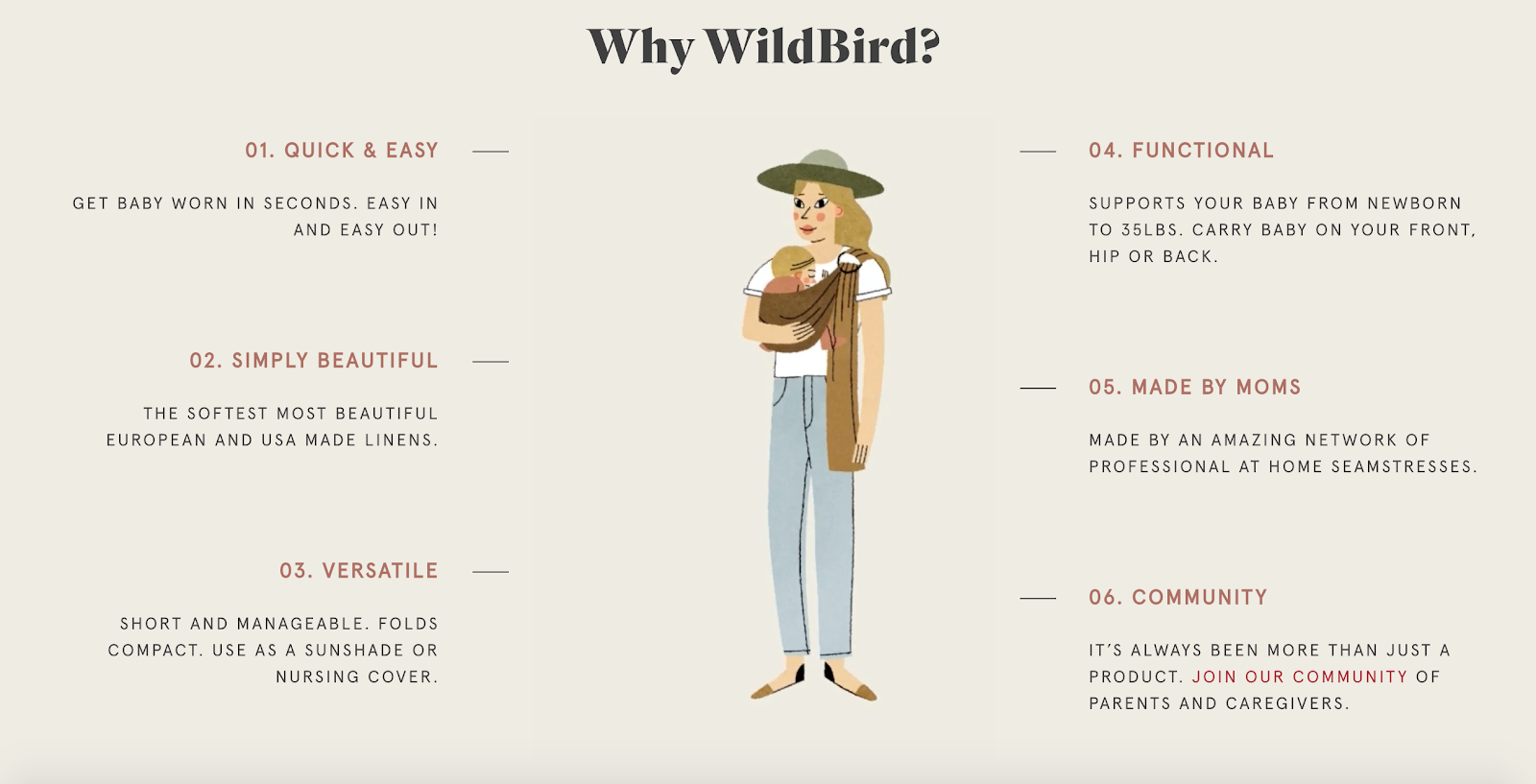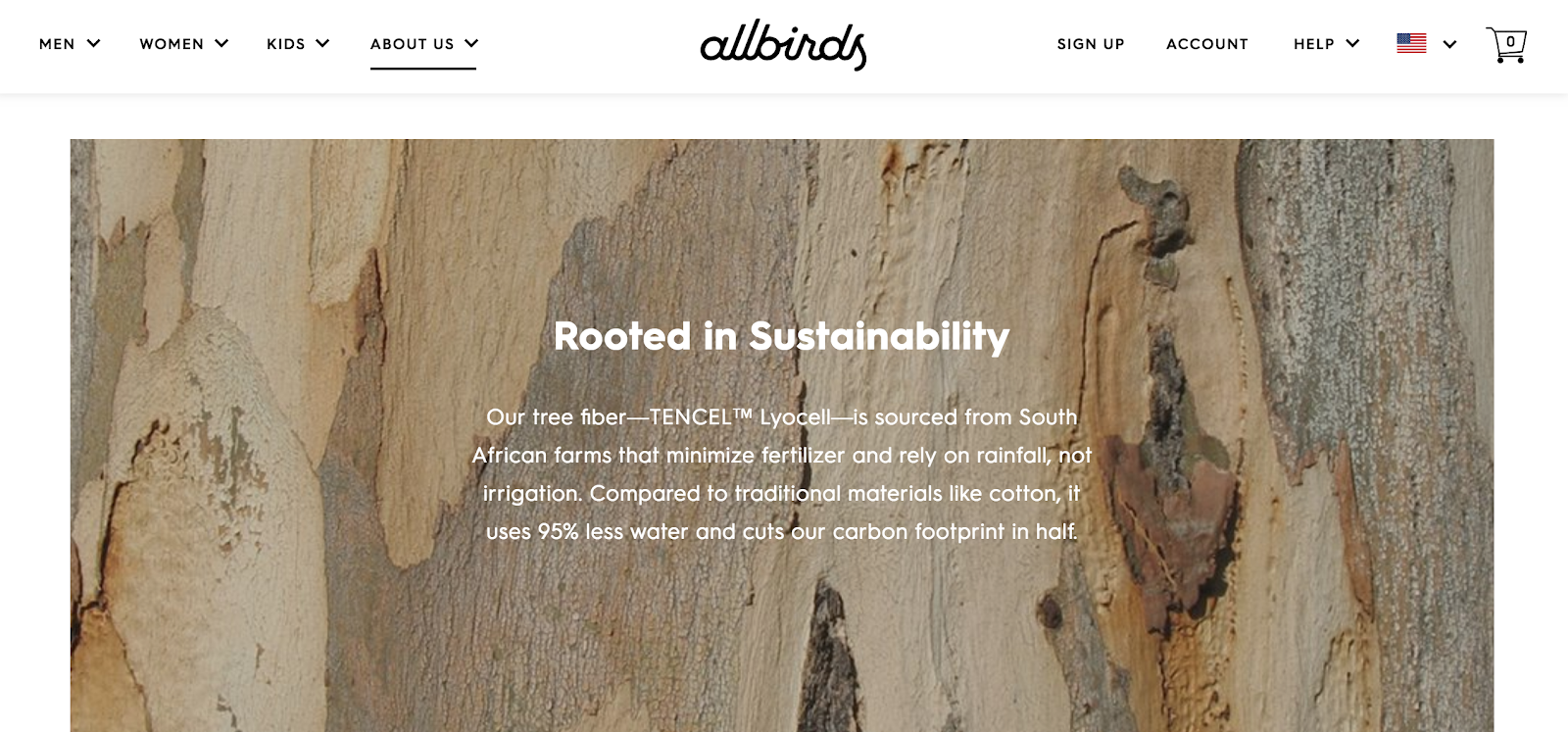The best and most profitable ecommerce brands in operation today know this to be true: it’s not about getting the sale—it’s about serving the customer.
It’s not about growth hacks, advertising optimization tactics, or pricing strategies. Those things still matter, but at the end of the day, it’s not what brings success in ecommerce. Instead, success comes from building relationships with people. It comes when you’re able to answer questions, solve pain points, and build trust. It comes when you can build something that brings people together to embrace a shared purpose, mission, or way of living.
It’s all about community.
Think about it: consumers are absolutely flooded with options when it comes to shopping online today. If you’re constantly working to stay afloat by competing on price and bidding on ads, you’re in a race to the bottom—and that’s not where businesses go to grow and succeed.
Consumers want more from the businesses they interact with and buy from online. They want to know what makes you different. They want to know what you care about, why you do what you do, what you’re doing to make the world better, and how they fit into your story.
To capture the attention, trust, and dollars of your audience, you need to build a community around your ecommerce business. Here are 7 tips that can help you get started:
1. Know What Matters to You
To build a community around your ecommerce business, you have to start by knowing what matters to you. If you’re like a lot of other ecommerce entrepreneurs, you didn’t start your business solely to make money—there was likely something else that motivated or inspired you.
To get to the heart of it, try to answer the following questions:
- What is your mission?
- What is your purpose for being in business?
- What problem are you trying to solve with your products?
- Why does it matter to you? What about others?
- What got you to where you are today? What steps did you take to get here?
- What are you hoping to accomplish with your business and products?
- Who is your products helping?
- What are your short-term and long-term goals?
- Where do you hope to see your business in five or ten years?
- What makes you and your business unique when compared to other competitors selling similar products?
Developing answers to these questions will help you start building the foundation of your community, and will make it easier for you when it comes time to attracting and mobilizing others.
2. Know What Matters to Your Customer
After you’ve taken some time to think about what matters to you, you can move on to trying to better understand what matters to your customer.
As an ecommerce entrepreneur, it’s important to realize that you are not doing business to serve yourself. Your mission is to serve others. Ideally there would be overlap and alignment on the things that matter to you and the things that matter to your customers, but this is not always the case for some.
To determine what matters to your customer, follow these steps:
- Step 1: Find a few customers or people in your target audience that you can interview.
- Step 2: Decide how you’d like to perform the interview. It could be in person, over the phone, through live chat, in a 1-to-1 email exchange, or through a survey using Google Forms.
- Step 3: Come up with your list of questions. Find out what motivates your customer and what matters to them. What do they care about? What are they trying to solve? How do they choose products and brands when they are shopping online? What mission or purpose do they care most about? Who do they relate to? How are they spending most of their time right now?
- Step 4: Schedule your interviews or send your surveys. To boost participation, incentivize with a promo code or special gift.
- Step 5: Collect answers and try to find common themes across the individuals you interviewed.
The answers you collect and themes you come across should be incorporated into the foundation of the community you build for your business and the people you’re ultimately trying to serve now and into the future.
3. Own Your Mission & Beliefs
After you’ve spent time answering questions about yourself and your customers, your next step is to formulate and document your mission and beliefs.
The best communities thrive when everyone understands what the shared purpose, goal, or mission is. It’s the one thing that everyone can relate to and rally behind.
To succeed in ecommerce, you have to know what you’re about. More importantly, however, is that other people need to understand what you’re about. They need to know what they are supporting when they choose to buy products from you. They need to know what kind of group or community they are bucketing themselves into when they choose to interact and support your business. Your job as an ecommerce business owner or marketer is to make it easy for them to understand.
Let’s look at two quick examples:
Example #1: Wildbird – Wildbird builds a community for new moms who want to develop a close bond with their babies. Here’s how they describe why they started their business on their website, “Our story starts with… a love for babywearing. It was not just about making parenting easier, it was about a connection. Babywearing will bring you closer to your little ones physically and emotionally, while giving you the freedom to take on the day.”
Example #2: Allbirds – Allbirds builds community for people who are interested in living in a more sustainable, environmentally-friendly world. Specifically, they use natural materials instead of synthetic options when crafting their shoes and flip flops. Here’s a brief blurb from their website that explains why the two founders started their company: “After years of researching and tinkering, Tim teamed up with Joey Zwillinger, an engineer and renewables expert. Together, they crafted a revolutionary wool fabric made specifically for footwear. The outcome? An entirely new category of shoes inspired by natural materials, and an ongoing mantra to create better things in a better way.”
These examples should hopefully motivate you to think more about the why behind your business. As soon as you know what it is, incorporate it into everything you do and everything your customer sees. Own your mission and purpose, and work to make it the focus of your community.
4. Tell and Share Real Stories
When you finally have your mission, purpose, and beliefs solidified, the best next step to take is to start supporting everything with real stories. Storytelling will help your audience better understand how they can and should relate to you and the other people within your community.
There are a number of different types of stories you can craft and share from others in order to promote your mission, purpose, and beliefs. Here are some ideas:
- Origin Stories – Tell stories about yourself and why you decided to create the business you created. Help people understand how far you’ve come from, and what made you so dedicated to the mission you’re now promoting.
- Product Creation Stories – Share stories about how your products are sourced and manufactured. Focus on highlighting the things that you know your audience will care about. Is it sustainability? Is it quality? Is it the people you’re employing? Help people understand the thought that goes into each product you design, manufacture, and sell.
- Customer Stories – Tell stories about your customers and help other prospective buyers understand who it is that typically buys your product and engages in your community.
- User-Generated Customer Stories – Share stories from your customers that they create themselves. These stories focus less on your products and more on the niche or themes that you’re trying to support. For example, with the Wildbird example from above, the focus is on raising babies and being moms.
- Partner Stories – Share stories that help people understand who your partners are and how they fit into the picture.
- Employee Stories – Tell stories about your employees and the other people who work hard to serve your customers.
It’s one thing to say that you care about a particular group of people, that you care about a mission, that you care about a specific theme—but it’s another thing to show people. Storytelling helps you illustrate your beliefs and makes it easier for other people to relate and attach onto them.
5. Blend Digital with Physical
In ecommerce we spend a lot of time focusing on digital campaigns, and not nearly enough time on opportunities to engage and build relationships with our audience in the physical world. If you want to successfully build a community around your ecommerce business, you need to create strategies that blend the two together. What exactly does that mean?
In addition to promoting your mission, purpose, and belief to your community within your digital channels like email, social media, and website, you should also be promoting it through:
- Unboxing materials – These are flyers, stickers, and other marketing collateral and swag that can be placed in the boxes that get packed and shipped to customers. These materials should be strategically added as part of the overall unboxing experience that you want each customer to have when they open a box from you.
- Direct Mail Flyers – These are promotional messages with offers attached that remind your customers why they supported you in the past, and why they should again.
- Handwritten Cards – These are surprise cards that you handwrite to first-time or repeat customers in an effort to build loyalty and foster a sense of community among your audience.
- Lookbook Magazines – These are bigger editorial-style print magazines that focus less on the products you sell and more on telling stories, promoting the mission, and aligning with the people that you’re serving.
- Pop-Up Stores & Local Events – These are physical events that allow you to interact with customers and would-be customers face-to-face.
Blending physical and digital campaigns gives you more opportunities to connect and engage with your audience members—all in an effort to continue building and supporting a community that is completely unique to your business.
6. Find Like-Minded Partners
Another great way to build and strengthen a community around your ecommerce business is to partner with another business that shares your mission, purpose, or beliefs. The idea here is that by collaborating together on marketing campaigns or actual products, you can leverage each other’s audiences and help support the communities you’re each trying to serve.
Let’s look at two quick examples:
Example #1: Filson x U.S. Forest Service – Filson collaborates with the U.S. Forest Service to create unique pieces that celebrate the conservation and protection of natural resources—a mission that their customers likely also care deeply about.
Example #2: TOMS x Disney – TOMS Shoes collaborates with Disney to promote and celebrate the female artists behind some of the most popular Disney movies of all time. It’s also meant to, “empower women and girls in the pursuit of their dreams. [It’s] for those who break glass ceilings, not glass slippers.” As with the rest of their shoes, every pair purchased allows them to donate to another person in need.
To strengthen your community, make a plan to collaborate with another ecommerce business or influencer in your niche. Remember—it doesn’t have to be a product collaboration. It could be something as simple as a blog post or a video. Start small, then continue building the partnership over time if it makes sense.
7. Remind, Reeducate, Reinvest
As you work to build a community around your ecommerce business over time, make an effort to constantly be reminding your audience about what your mission and purpose is, re-educating them on why it matters to you and others, and reinvesting in the community as a whole. Don’t be afraid if your community or your purpose changes or evolves over time. Just focus on serving your customers, listening to their point of view, and empowering people to come together to support a shared purpose or way of living.
Over to You
How are you building community around your ecommerce business? What tactics have worked best for you and your customers? Tell me your experiences in the comments below.







